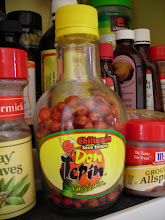 I became aware of and interested in ethnographic studies a short time ago, and I immediately questioned how one could create a non-fiction story without misrepresenting his/her subjects. As soon as I began reading this wonderful book, I developed a deep appreciation for Glassie’s writing and what he was trying to accomplish—a true depiction of these people’s everyday lives. I think Glassie has come as close to writing and presenting the people of Ballymenone as anything I can imagine. In his preface he writes, “We have one enterprise. We could call historical ethnography or local history or folklore in context or the sociology of the creative act or the ecology of consciousness—the potential for flashy neologism seems boundless—but whatever its name, study is distorted and reality is mangled when disciplines hardened into ideology, categories freeze into facts, and the sweet, terrible wholeness of life is dismembered for burial” (xiv). In this statement, Glassie is telling his readers that he is aware that studies in this discipline can potentially fall into the dangerous territory of not being responsible and true to the people one studies. He says later on that he hopes that his work can help others in this field to overcome the challenge of misrepresentation and give them another way to tell their stories.
I became aware of and interested in ethnographic studies a short time ago, and I immediately questioned how one could create a non-fiction story without misrepresenting his/her subjects. As soon as I began reading this wonderful book, I developed a deep appreciation for Glassie’s writing and what he was trying to accomplish—a true depiction of these people’s everyday lives. I think Glassie has come as close to writing and presenting the people of Ballymenone as anything I can imagine. In his preface he writes, “We have one enterprise. We could call historical ethnography or local history or folklore in context or the sociology of the creative act or the ecology of consciousness—the potential for flashy neologism seems boundless—but whatever its name, study is distorted and reality is mangled when disciplines hardened into ideology, categories freeze into facts, and the sweet, terrible wholeness of life is dismembered for burial” (xiv). In this statement, Glassie is telling his readers that he is aware that studies in this discipline can potentially fall into the dangerous territory of not being responsible and true to the people one studies. He says later on that he hopes that his work can help others in this field to overcome the challenge of misrepresentation and give them another way to tell their stories. I found his focus on the family and its relation to the community fascinating, and the two chapters “Butter” and “Brick” in part seven “Enough and a Little Bit More,” reminded me of summers in my childhood spent with my grandparents. Strangely, these chapters focus on two jobs which were similar to the jobs my grandparents had—working in a creamery and carpentry. I remember the stories my grandparents would tell me about these jobs and the hard times they had earlier in their lives; when I read these two chapters, the language the people telling the stories used was familiar to me. I appreciate Glassie allowing the language of the storytellers to be delivered in their own words.
My grandparents lived in a very small town where everyone knew everyone else, and there was a strong sense of community. Glassie’s statement, “In the worst of times, they took fish from its water and they were enough. In better times, the land provided ‘enough and a little bit more’” (528) describes perfectly the feeling one had when walking around this little town. I remember going around to various neighbors’ homes with my grandmother to deliver food or simply to check and make sure they were all right. As Glassie writes, “This flow of gifts carries us to life's sacred foundations where neighborliness is an obligation, generosity is a holy act, where nothing is wholly owned” (528). At the time, I remember thinking how odd this neighborliness was because in Tucson, where I grew up, I never really knew many of my neighbors or had a close sense of community. Looking back, I realize what a rare experience I had during the summers visiting my grandparents. My grandparents worked hard all of their lives, and they always had enough, and they made sure that there ‘little bit more’ helped the community they lived in. Kristin




No comments:
Post a Comment